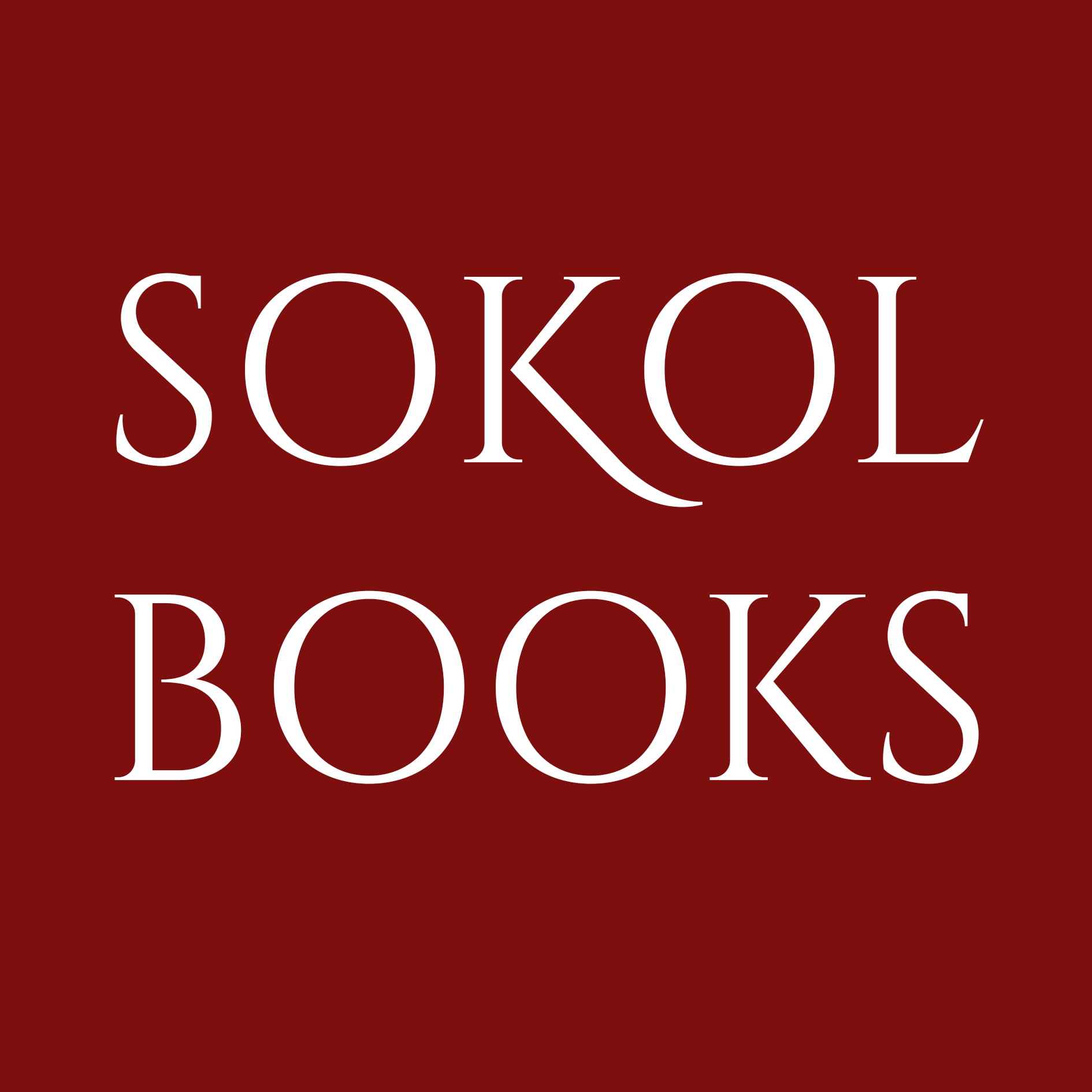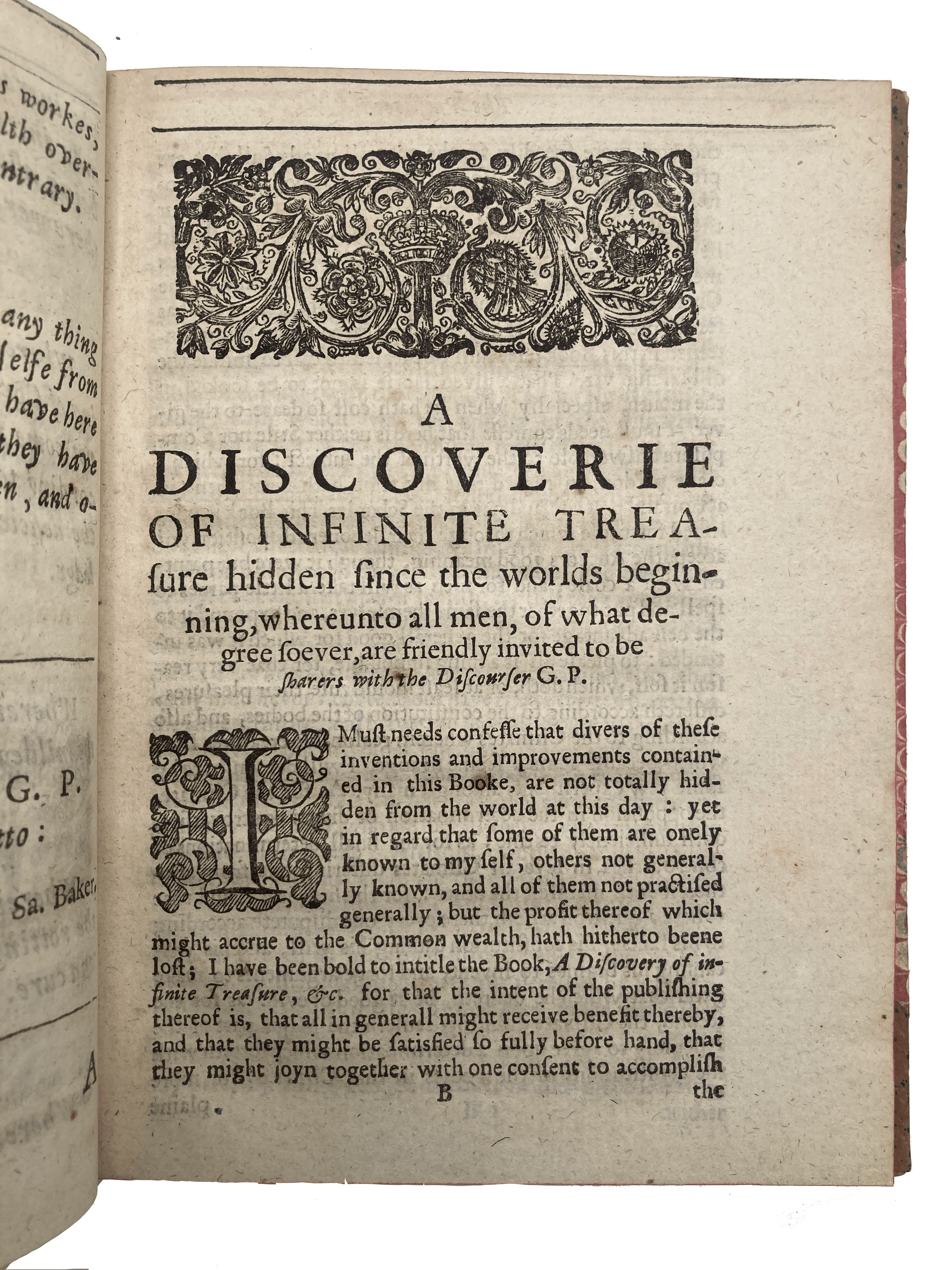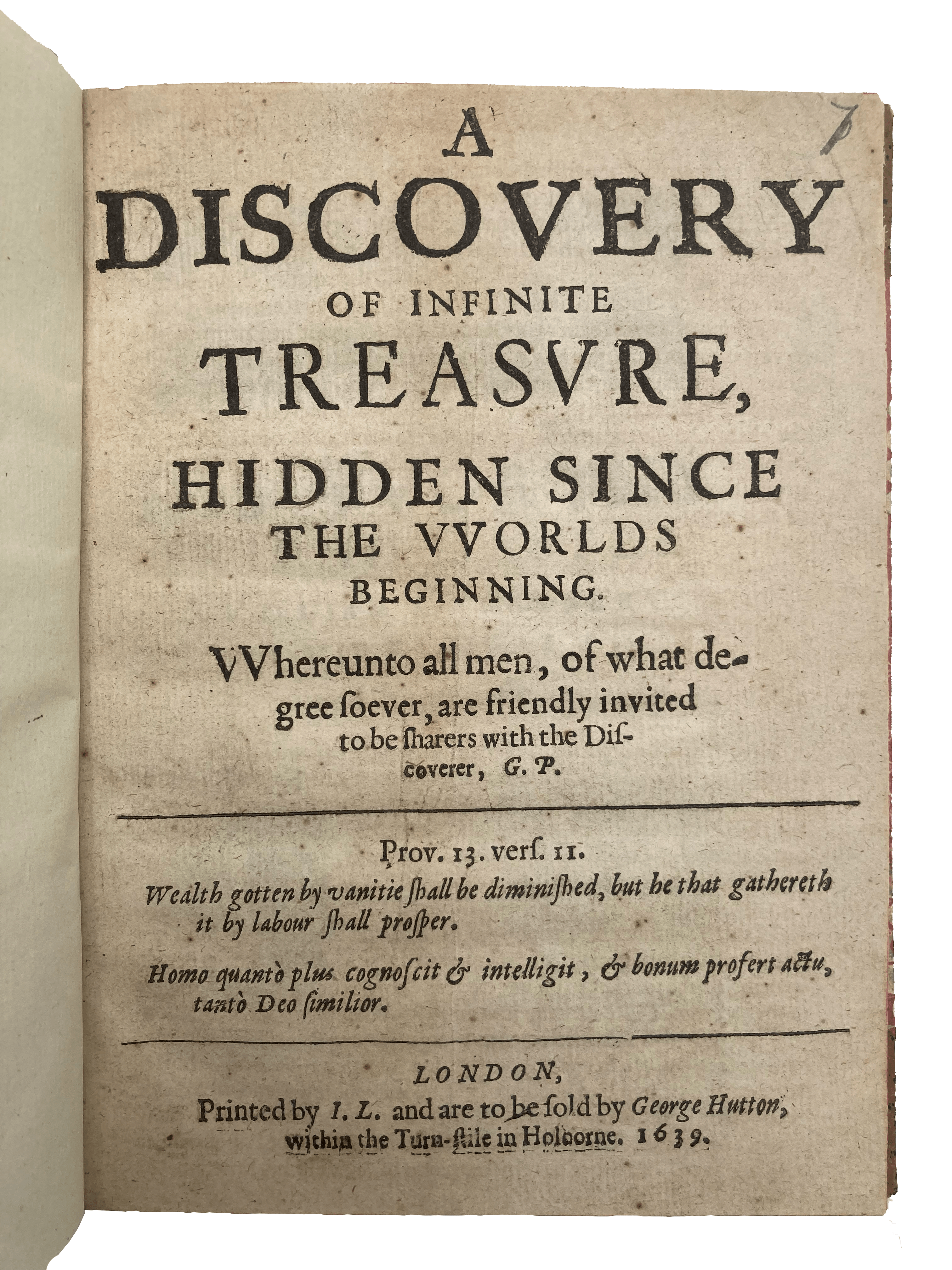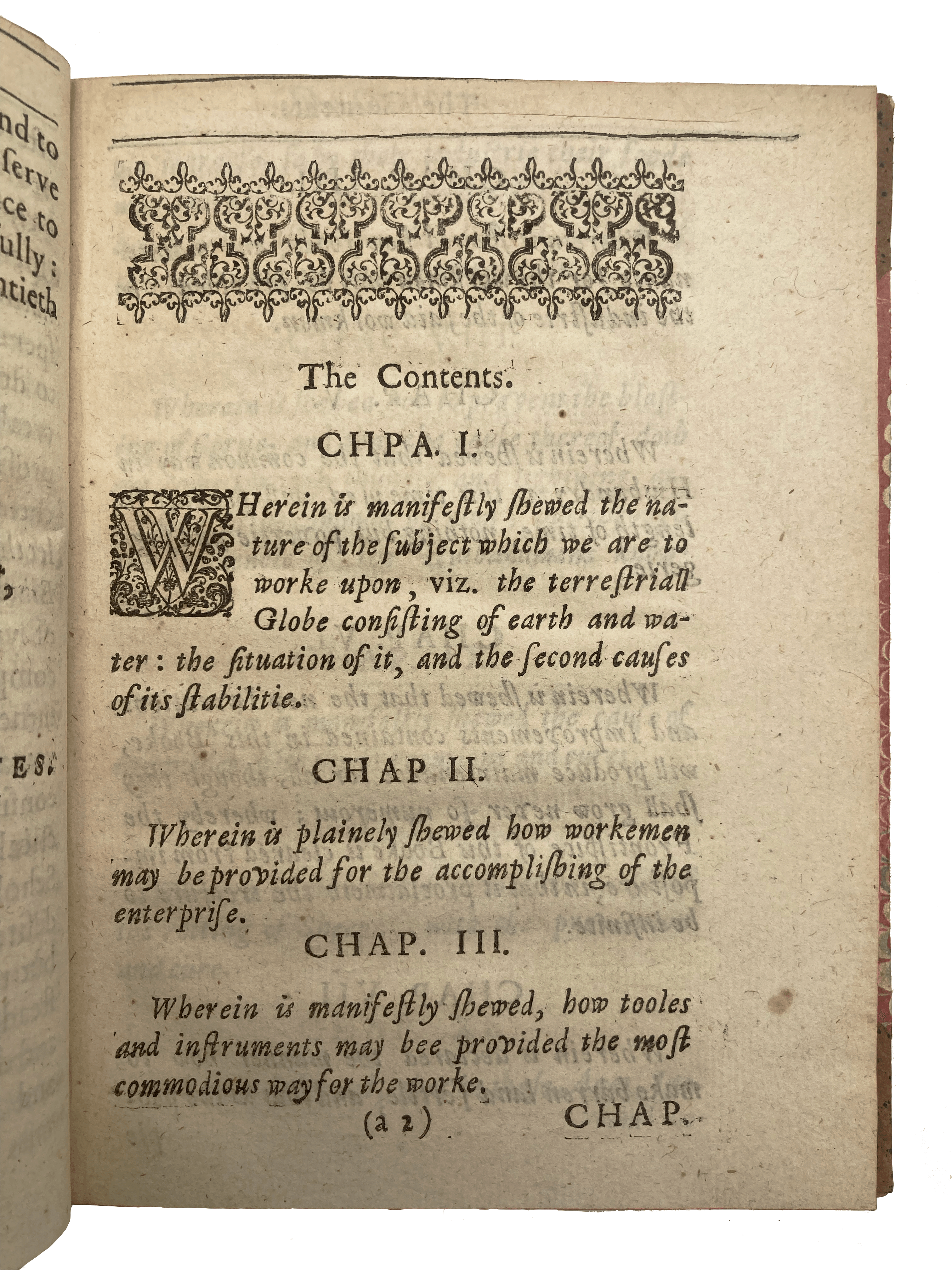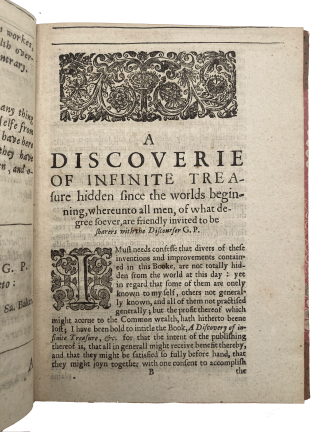PLATTES, Gabriel.
MINES, MINERALS AND AMERICA
A Discovery of Infinite Treasure, hidden since the Worlds Beginning. [with] A Discovery of Subterraneall Treasure.
London, Printed by I.L., 1639.£9,750.00
FIRST EDITIONS. Small 4to. 2 works in 1, separate tp to each, I: pp. [34], 92, [2], lacking A1 (blank), cancel title; II: pp. [10], 60, lacking Q2 (blank). Decorated initials and ornaments. Age yellowing. Very good copies in modern half calf over marbled boards, armorial 1860 bookplate of the Earl of Macclesfield’s South Library, one slightly later ms marginal note.
Two important works of alchemy and natural science, both in their first editions and designed to be complementary. Gabriel Plattes (c.1600–44) was part of Samuel Hartlib’s circle of social and agricultural reformers, conducting his own experiments to improve agricultural practice in England. ‘Under the guide of husbandry and economic schemes, Plattes developed a natural philosophy that emerges throughout all his works. On a first reading, ‘Discovery of Subterraneall Treasure’ discloses a series of experiments with metals and transmutations, while in fact it establishes the foundations of Plattes’s alchemical theory of matter. ‘A Discovery of Infinite Treasure’ […] on the one hand, discusses Plattes’s cosmology and asserts that all bodies in the universe are made of essentially the same matter, but, on the other hand, it provides accounts of technologies that may be used to improve the soil (assaying, fertilization, enclosure) based on a theory of plant nutrition and cyclic chemical change’ (Encycl., p.1643). These first two books published by Plattes were famous and highly appreciated in England and abroad, Marin Mersenne even expressing his intention to translate Plattes’ books in French. The first work beings with a discussion of the globe, as made of earth and water, and the causes of their stability. It proceeds to analyse the importance of agricultural tools and how traditional husbandry techniques ‘will produce in length of time nothing but poverty and beggary’. The remainder provides sundry agricultural methods to increase efficiency and production, e.g., how to prevent the ‘blasting’ of corn, mildew, the rotting of sheep, as well as the reasons why new inventions seeking to reduce the number of workers are not conducive to the prosperity of a ‘Common-wealth overcharged with people, but rather the contrary’. The second work is on mining and the discovery of minerals with a large section on the arts of dyeing and fixing colours. It gives directions for ‘finding’ metals and minerals, for ‘melting, refining and essaying them’, and not only how to test gold but how to make it. Plattes makes references to the lodestone and discusses the new plantations in New England, Virginia, Bermudas, and the mines in Peru, but it is perhaps scientifically most interesting as the first English work to describe the process of separating silver and gold by nitric acid. There are chapters on the origins of mountains and minerals, the smelting and refining of lead, tin, iron, copper, and silver. An entire chapter is dedicated to gold also describing a means of detecting counterfeit gold, with the following chapter on its alchemical production. The final chapter discusses the making dyes from vegetable sources and giving various recipes for fixing colours.
I: STC (2nd ed.), 19998; Sabin, 63360: ‘interesting notices of the gold and silver mines in Peru, New England, Virginia, the Bermudas, and other parts of America\\\\\\\\\\\\\\\\\\\\\\\\\\\\\\\'; ESTC S114836. II: ESTC S100866. STC 20000. Sabin 63360: ‘interesting notices of the gold and silver mines in Peru, New England, Virginia, the Bermudas, and other parts of America\\\\\\\\\\\\\\\\\\\\\\\\\\\\\\\'; Ferguson, Secrets, I, p.17; Alden 639/94. Encyclopedia of Early Modern Philosophy and the Sciences (2022).